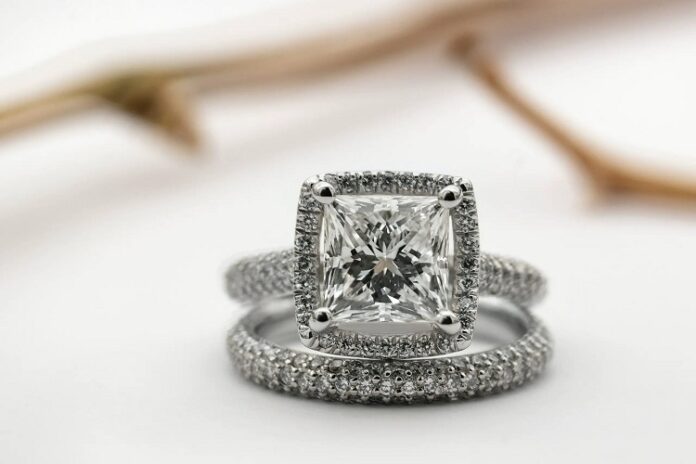Due to exciting technological advancements, lab-grown diamonds are becoming even more prominent in the jewelry industry. As a more ethical alternative to natural diamonds, more people are choosing these lab-grown jewels, which is helping to dispel false ideas about lab-grown diamonds being “low-quality” or “fake”.
Table of Contents
What is a lab-grown diamond?
A lab-grown diamond is, as the name suggests, a diamond that is grown in a lab machine, as opposed to being mined. These lab diamonds are created from actual carbon atoms and made to physically and chemically match natural diamonds.
Why should you choose a lab-grown diamond?
There are several pros to choosing a lab-grown diamond over a natural diamond, such as:
- They are less expensive.
- They take fewer years to manufacture, making them more readily available.
- They are the eco-friendlier and more sustainable option.
- They are more ethical because they aren’t mined.
- They look identical to natural diamonds.
- They are made of the same carbon atoms but are sourced more cheaply.
Lab Grown Diamonds: Complete Buying Guide of Lab Diamonds | Rare Carat
If you’re looking for reasonably priced, beautiful lab-grown diamonds, Rare Carat is the perfect site for your search. With excellent reviews from customers, Rare Carat is America’s #1 source of unbiased advice for diamonds, with plenty of knowledge and guidance to offer.
Rare Carat works like a search engine, performing free, credible gemologist checks on the lab diamonds available from Rare Carat retailers. Consumers can work through a range of specifications to narrow down their search and customize their perfect diamond.
Shape
Rare Carat promotes a range of different diamond shapes, including oval, pear, heart, round and cushion, produced by reliable retailers.
Colour
The colour scale ranges from D-K, with D being the whitest diamond and K being the yellowest. As the scale descends from D to K, the diamonds move from a very white colour to a faint yellow.
Clarity
When a diamond is described as ?? flawless’, this refers to its lack of visible imperfections. Almost all diamonds have some imperfections, called ?? inclusions’, but they are more visible in some than they are in others. Rare Carat lets you choose how ?? eye-clean your diamond is.
Cut
The cut of your diamond also impacts its appearance and its price. The ?? Rare Carat Ideal’ tells customers exactly what a high-quality diamond cut should be, so you can get the best quality for your money.
Carat
The higher the carats, the higher the cost, so it’s a good idea to browse the range. Rare Carat promotes 1 carat diamonds may vary from $1900 to $21000 and 2 carat diamond may vary from $6000 to $59000, but they also promote diamonds below 1 carat.
Price
You should always have a budget in mind when looking to buy a diamond. You also need to set some money aside for the ring setting, if you are shopping for a diamond for an engagement ring or a pendant.
Advanced Diamond Filters
You can further narrow down these lab-grown diamonds using the ?? Advanced Diamond Filters’. These include how polished a diamond is, how symmetrical it is, how fluorescent it is and what its angles are. By utilizing these features, you can explore all of the diamonds available across dozens of retailers and get the best deal possible.
Rare Carat offers the consumer total control over what their lab diamond looks like and provides expert guidance before purchase. This includes a quality check, a price check and a look into each particular diamond’s popularity. Rare Carat compares millions of diamonds and uses jewelry-industry expertise to suggest the best diamonds for a consumer’s budget.
How will lab-grown diamonds impact the future of the jewelry industry?
Lab-grown diamonds have slowly but surely been accepted as a welcome alternative to the pricier natural diamonds, and with experts like Rare Carat promoting brands that sell them, their popularity will only continue to grow. As the jewelry industry looks more seriously into ethical and environmental options, lab-grown diamonds will doubtless play an important role in its future.
That isn’t to say that natural diamonds will disappear, but they may see less success as the lab-grown diamond supply chain continues to move at a faster rate, given the shorter manufacturing process. Lower prices will also appeal to consumers, especially if lab diamonds are proven to be of excellent quality.
Rare Carat and other gem experts will certainly need to continue offering their services as more people become aware of lab-grown diamonds and start to seek them out as an alternative to the natural stones that the jewelry industry has been predominantly known for, until now.




